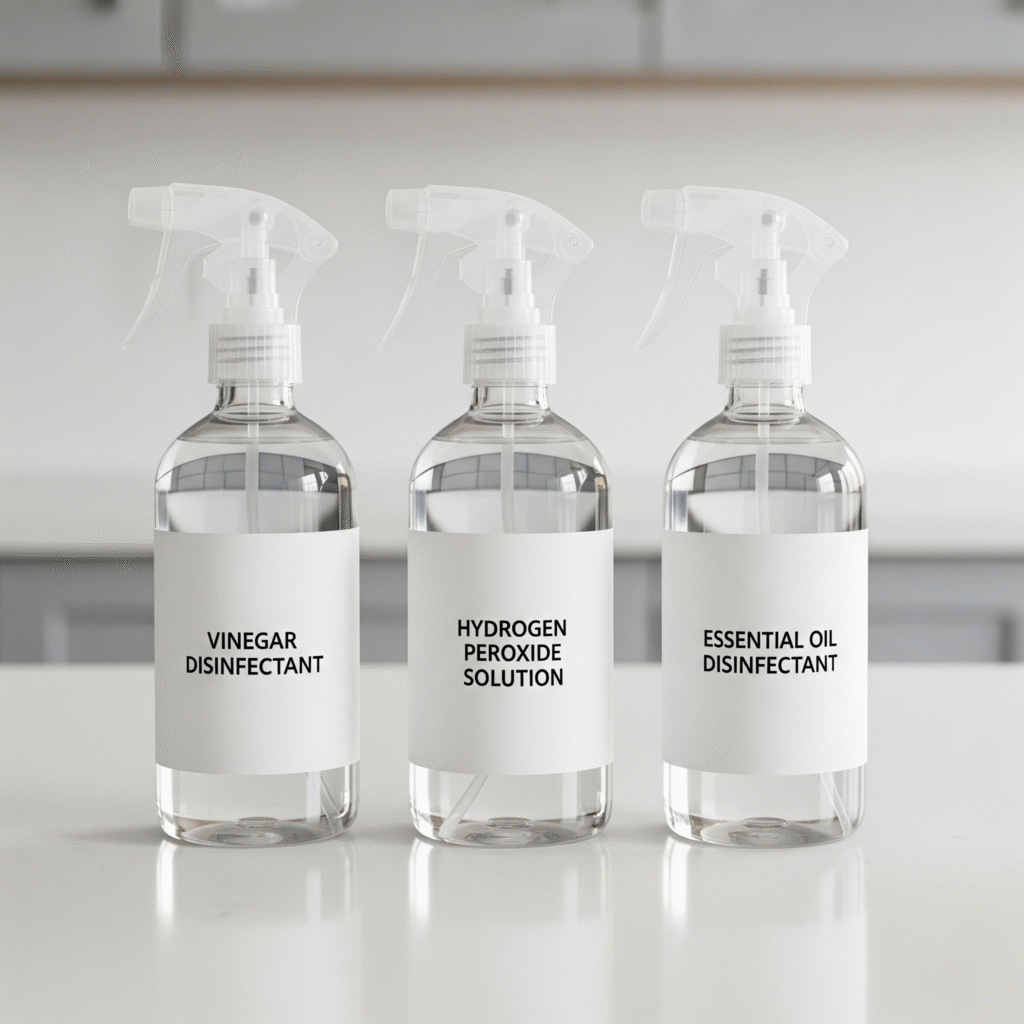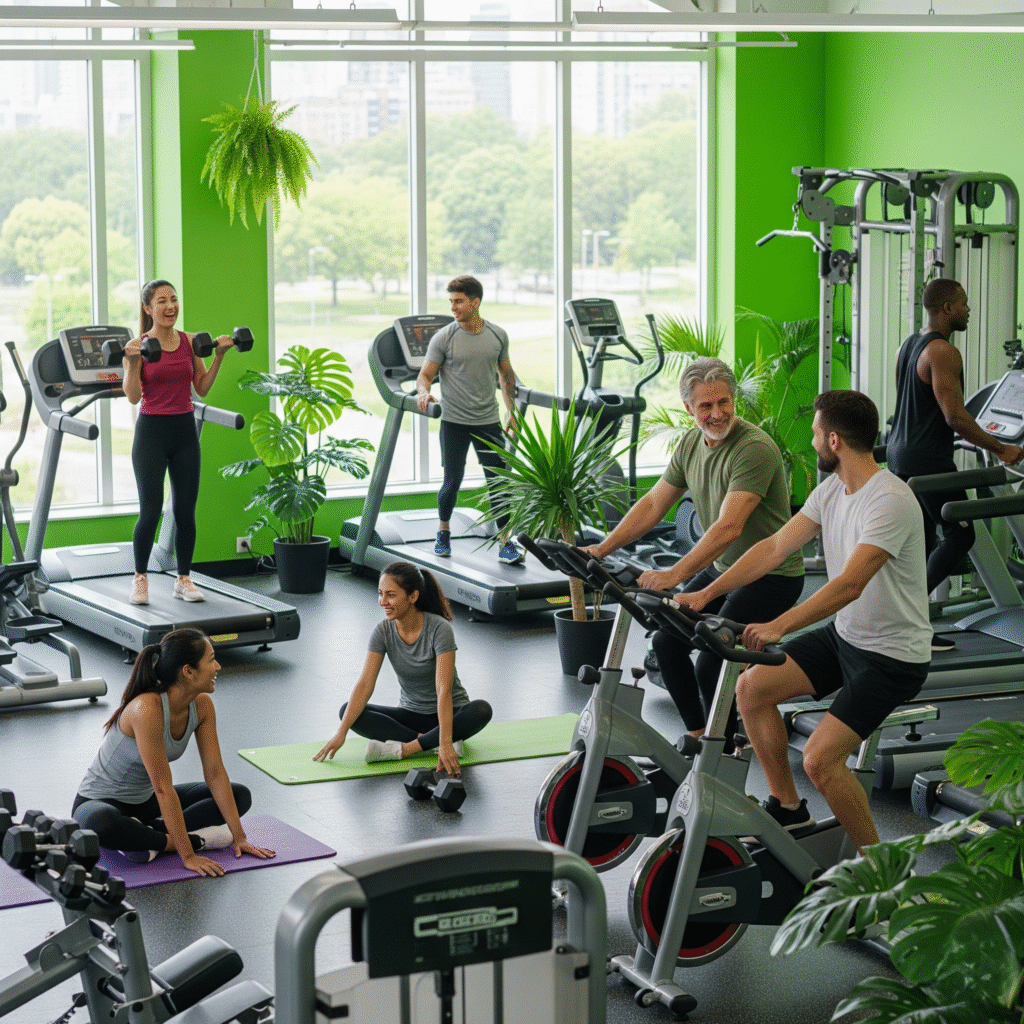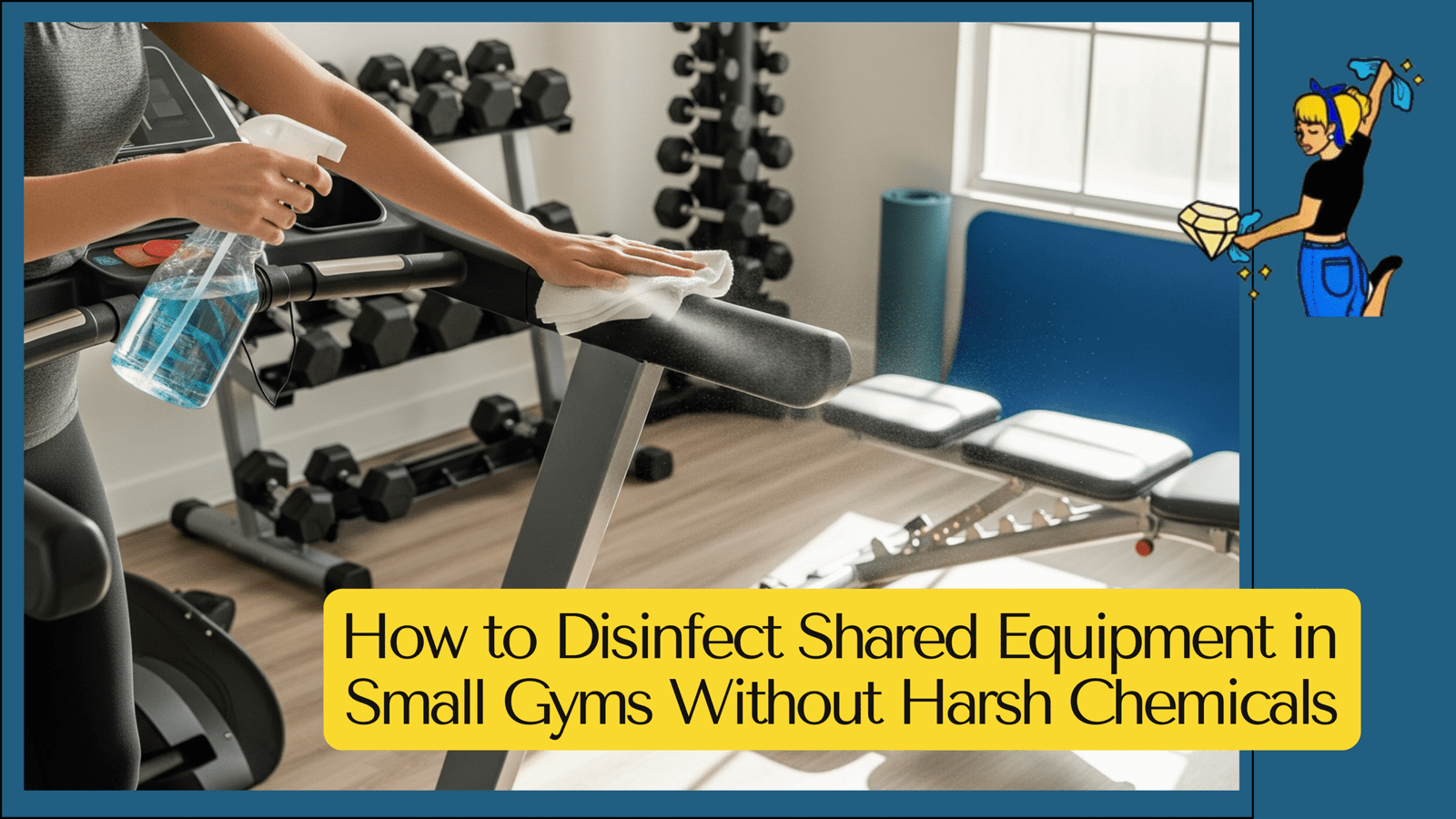In today’s health-conscious world, gym owners face a unique challenge: keeping shared equipment clean and safe while avoiding harsh chemical disinfectants that can irritate skin, harm the environment, and damage expensive gear. For small gyms and studios, creating a green cleaning routine isn’t just about protecting the planet; it’s also about attracting members who value wellness beyond exercise.
Here’s how to keep your fitness equipment sanitized naturally, safely, and effectively.
Why Avoid Harsh Chemicals?
Common commercial disinfectants often contain:
- Chlorine bleach
- Quaternary ammonium compounds (quats)
- Strong alcohol solutions
While effective at killing germs, these chemicals can:
- Trigger allergies or asthma
- Causes skin irritation
- Damage rubber grips, upholstery, and flooring
- Release fumes that linger in poorly ventilated spaces
1. Understand the Difference Between Cleaning and Disinfecting
Cleaning removes dirt, sweat, and oils, making surfaces less hospitable to bacteria.
Disinfecting kills germs on contact.
Natural products can do both when used correctly, but require:
- Proper contact time (letting the product sit before wiping)
- Consistent daily use
2. Choose Natural, Effective Disinfectants
You don’t have to rely on bleach to keep your gym safe. Consider:
White vinegar (acetic acid):
- Breaks down sweat and grime
- Has mild antibacterial properties
Hydrogen peroxide (3%):
- Kills bacteria, viruses, and fungi
- Breaks down into water and oxygen, with no residue
Plant-based cleaners with essential oils:
- Tea tree, eucalyptus, and lavender oils have natural antimicrobial properties
- Smell fresh without synthetic fragrances

3. Make Your Eco-Friendly Disinfectant Spray
DIY Recipe (for hard, non-porous surfaces):
- 1 cup white vinegar
- 1 cup water
- 10–20 drops of tea tree or lavender essential oil
Spray onto surfaces, let sit for 1–2 minutes, then wipe with a microfiber cloth.
For extra disinfection, follow with a light mist of 3% hydrogen peroxide.
4. Focus on High-Touch Areas
In small gyms, bacteria build up fastest on:
- Dumbbells and kettlebells
- Weight benches and machines
- Yoga mats and resistance bands
- Cardio equipment handles and screens
Make these the top priority in your cleaning routine.
5. Use Microfiber Cloths Instead of Paper Towels
Microfiber:
- Traps bacteria more effectively
- Reduces waste
- Won’t leave lint behind on rubber or metal surfaces
Wash microfiber cloths daily in hot water and avoid fabric softeners (which reduce absorbency).
6. Encourage Members to Help
Provide:
- Clearly labeled spray bottles of natural disinfectant
- Signs explaining why you use eco-friendly products
- Fresh clothes or compostable wipes for personal use
Members appreciate transparency, and it keeps your gym consistently cleaner.
7. Clean Soft and Porous Equipment Naturally
- Wash yoga mats weekly with mild soap and water
- Spray fabric straps and foam rollers with hydrogen peroxide and air-dry
- Launder towels and covers in hot water with fragrance-free detergent
8. Improve Air Quality Too
- Add live plants to absorb airborne toxins and produce oxygen
- Open windows when possible for natural ventilation
- Use HEPA-filter air purifiers to reduce dust and allergens
Better air quality supports your disinfecting efforts and enhances the workout environment.
9. Train Staff on Proper Eco Cleaning Practices
Consistency matters more than product strength. Train staff to:
- Apply disinfectant evenly and generously
- Wait for the correct contact time before wiping
- Replace or wash cleaning cloths frequently
10. Balance Safety and Sustainability
While natural products work well for daily cleaning and light disinfection, consider keeping a small supply of EPA-approved disinfectants:
- For outbreaks of flu, norovirus, or other highly contagious illnesses
- To comply with local regulations for high-risk areas like bathrooms
Use them sparingly and ventilate the space well.
Common Myths About Natural Cleaning
Myth: Vinegar kills everything
Reality: Vinegar has limited antiviral power; hydrogen peroxide is better for viruses.
Myth: Stronger chemicals mean better safety
Reality: Overuse increases exposure risks without always improving cleanliness.
Benefits of Going Green in Your Gym
Attract eco-conscious members
Protect expensive equipment from corrosion
Reduce allergies and respiratory issues
Support your brand’s commitment to wellness
Members notice and appreciate when a gym’s cleaning strategy matches its health-focused mission.

Conclusion: Clean, Safe, and Sustainable
Disinfecting your small gym doesn’t have to mean filling the air with harsh chemicals. By choosing natural disinfectants, training staff, and using eco-friendly tools like microfiber cloths, you create a healthier environment for members and your business.
Going green isn’t just good for the planet; it’s good for your equipment, your brand, and your members’ peace of mind. Contact us today.

